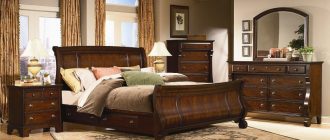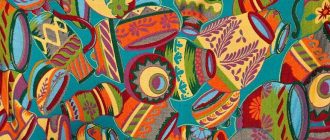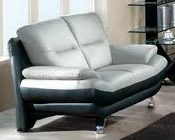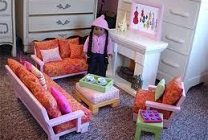Considerable amount of furniture was delivered to, and made in, the West Indian islands (belonging to Denmark and England) during the second half of the eighteenth century and the opening decades of the following era. This has been recorded in part, in so far as the Danish islands of St. Croix and St. Thomas are concerned, but with no attempt to determine the provenance of various examples which formerly appeared in the large plantations of these islands.
Danish planters shared their islands with the Dutch, Irish and English. Furniture brought in by the Danes was largely typical of examples produced in Flensburg, the most important trading town in Schleswig. The Irish, too, are said to have patronized the furniture industry there, joining their Danish colleagues in sending West Indian timbers from which pieces were to be made and sent back to the islands.
Mahogany was the principal material sent to the homeland. It was used in the islands not only for primary but for secondary purposes. The reason is apparent in the furniture still found throughout the West Indies, in which secondary portions made of pine or other softwoods have completely deteriorated. Even the lighter and softer grades of mahogany were attacked by the larvae of the furniture beetle, proving that only the dark and heavy native variety of mahogany is immune to the ravages of this pest.
Furniture brought to St. Croix and St. Thomas by the Danes, Dutch, Irish and English, and also from America, was copied or adapted according to existing requirements. Colored natives were found to be as excellent craftsmen as those employed in our southern states, and were supervised by white foremen. It is supposed, however, that the greater amount of furniture was imported from these other areas, at least prior to the period of Empire designs.
Island styles followed the Early Georgian designs in seat furniture, tripod stands and drop-leaf tables. The latter were generally oval or oblong, with straight turned and tapered legs ending in dub feet. Chippendale influence is seen in some seat furniture and in cabinet pieces fitted with drawers, or enclosed by doors of full length, or of half length with glass panels set in.
Hepplewhite and Sheraton designs were also followed, but where veneers were laid on with softwood foundations many pieces have lost complete identity through necessary restoration. However, there are gaming and dining tables, chests of drawers and larger cabinet pieces which, by their designs, prove that they were made in the islands or in Denmark. Some pieces, well kept under favorable conditions, retain secondary woods which indicate the possibility of island origins.
Empire furniture was largely influenced by Danish designs, but of greater interest to present-day collectors are the glass, or metal and glass, hurricane lights and chandeliers which accompanied this style. It is apparent from the typical forms and ornamental details of the scrolled lights and their shields that the majority were obtained from Scandinavia.
Robert Gillow, founder of the famous old Lancaster firm bearing his name, supplied furniture to the West Indies, accepting sugar, rum and cotton in return. In addition to the other sources of such imports, Sweden also provided the colonists with a small amount of furniture.





